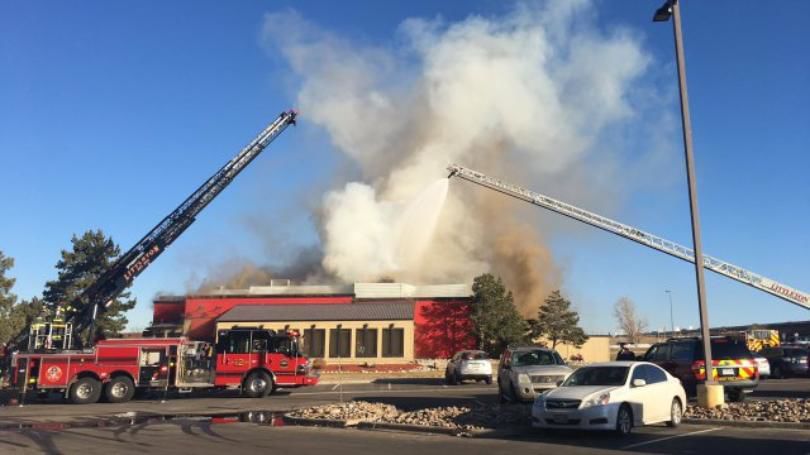Primed for business

Surrounded by elected officials, business leaders, and members of his cabinet, Colorado Gov. John Hickenlooper officially unveiled his “bottom-up” plan for revitalizing the state’s economy Wednesday at a press conference in Denver’s River North district. The Colorado Blueprint: a bottom-up approach to economic development is the culmination of six months of Administration efforts to get citizen input on how government can best address the state’s economic woes, which include sluggish job growth numbers and an unemployment rate just under nine percent.
Standing in front of a loading dock-turned-office in the unique mixed-use TAXI campus — an open-air space where employees can sit on big, bouncy exercise balls instead of chairs, and make use of ping pong and foosball tables during their breaks — Hickenlooper explained the plan.
The Governor, who previously served as Denver mayor for two terms, pointed to his experiences as a business owner and entrepreneur working with developer Mickey Zeppelin, whose son, Kyle Zeppelin, is the principal and chief curator of the TAXI campus, on how to go from the initial planning stages of improving areas like River North and Lower Downtown to “make it real.”
“Government’s never going to do it all,” Hickenlooper said. “It’s not going to solve everyone’s problems, but it can create the environment and the context by which people help to solve their own problems.”
The report itself contains a disclaimer that it is not a list of job creation goals, but rather “a first set of achievable objectives to undertake together.” The Governor himself was quick to admit its generality when pressed for answers on why, for the most part, the report lacks specific goals. “I think what you’re asking us for is to pull a number out of a hat,” he said. “Look back over the last four years at every economic prediction that top economists in the country have used. It’s probably about as reliable as a seven-day weather forecast.”
Predictions aside, the state’s recovery has been sluggish, to say the least. It has outperformed the national average, but only yielded a net creation of slightly less than 15,000 jobs between June 2010 and June 2011, according to statistics provided by the Colorado Department of Labor and Employment. Those numbers were boosted by an increase in private sector job growth, but budget cuts have led to public sector employee layoffs that have weakened overall employment in the state. Colorado’s unemployment rate decreased one tenth of a percent in June, but CDLE noted that this was due to the state’s workforce shrinking — not an increase in total employment.
Most of the recommendations in the 75-page report center around broad regional outlines. In Logan, Sedgwick, Morgan, Phillips, Yuma, and Washington counties, for example, the report gives less than one-sentence recommendations such as “developing transmission lines” and “build water storage to maximize water in area” without describing specific plans for how these projects would come into being, nor how they would be paid for. In other areas, such as in the regional statement for Lincoln, Elbert, Cheyenne and Kit Carson counties, there are slightly more tangible ideas like “task Office of Economic Development and International Trade (OEDIT) to create an available asset template to be used by the counties” and “launch regional electronic business and services directory” which the state would implement for each region.
As far as actual job growth goals, the Governor said while some counties did provide specific numbers — Weld and Larimer counties, for instance, have a goal of 5,000 new jobs created over the next five years — most of them did not due to lack of sufficient data. “We would have been guessing,” the Governor lamented.
The Blueprint lays out six areas that the Administration says can be a framework for a speedier recovery, including creating a business-friendly environment, recruiting new businesses while growing and retaining existing ones, marketing a stronger Colorado brand, and strengthening education and job training programs. But, according to Hickenlooper and outgoing OEDIT executive director Dwayne Romero, the two points most frequently brought up by those who attended the public forums were increased access to credit from financial institutions and government grants, and cultivating innovation and technology, with an emphasis on better broadband internet availability to rural communities.
“This grassroots outreach,” Romero said, referring to the forums, “is a healthy recognition that state leadership doesn’t own all of the solutions. Local communities and local economies do have a lot of the definition and detail, and own their own initiative.”
Romero, who will be succeeded in his post on Aug. 1 by Ken Lund, currently the Governor’s chief legal counsel, went on to describe the plan itself as a response to the “overarching message” that excessive government red tape, and the lack of empathy and urgency from the government to change its own rules, was what they thought was stunting the state’s recovery.
When asked to cite a specific example of “cutting red tape,” Romero pointed to the Colorado Department of Transportation. “Even within the first few weeks of the administration [CDOT] turned around and commenced an internal audit.” Looking at old rules and procedures, Romero said, allowed them to look for areas where legislative remedies might create a more business-friendly atmosphere.
State Senator Pat Steadman, D-Denver, agreed. “New spending is going to be tough,” he told The Colorado Statesman, “but in terms of regulatory reform, and access to capital, those are things that the legislature will be eager to partner with the Governor on.” Steadman’s colleague in the House, Rep. Daniel Kagan, D-Cherry Hills, expressed optimism about the plan. “This report clearly shows there’s a foundation for prosperity that we can build upon, and I’m excited to roll up my sleeves and partner with the Governor’s office to get Colorado’s economy moving.”
Colorado Politics Must-Reads:














